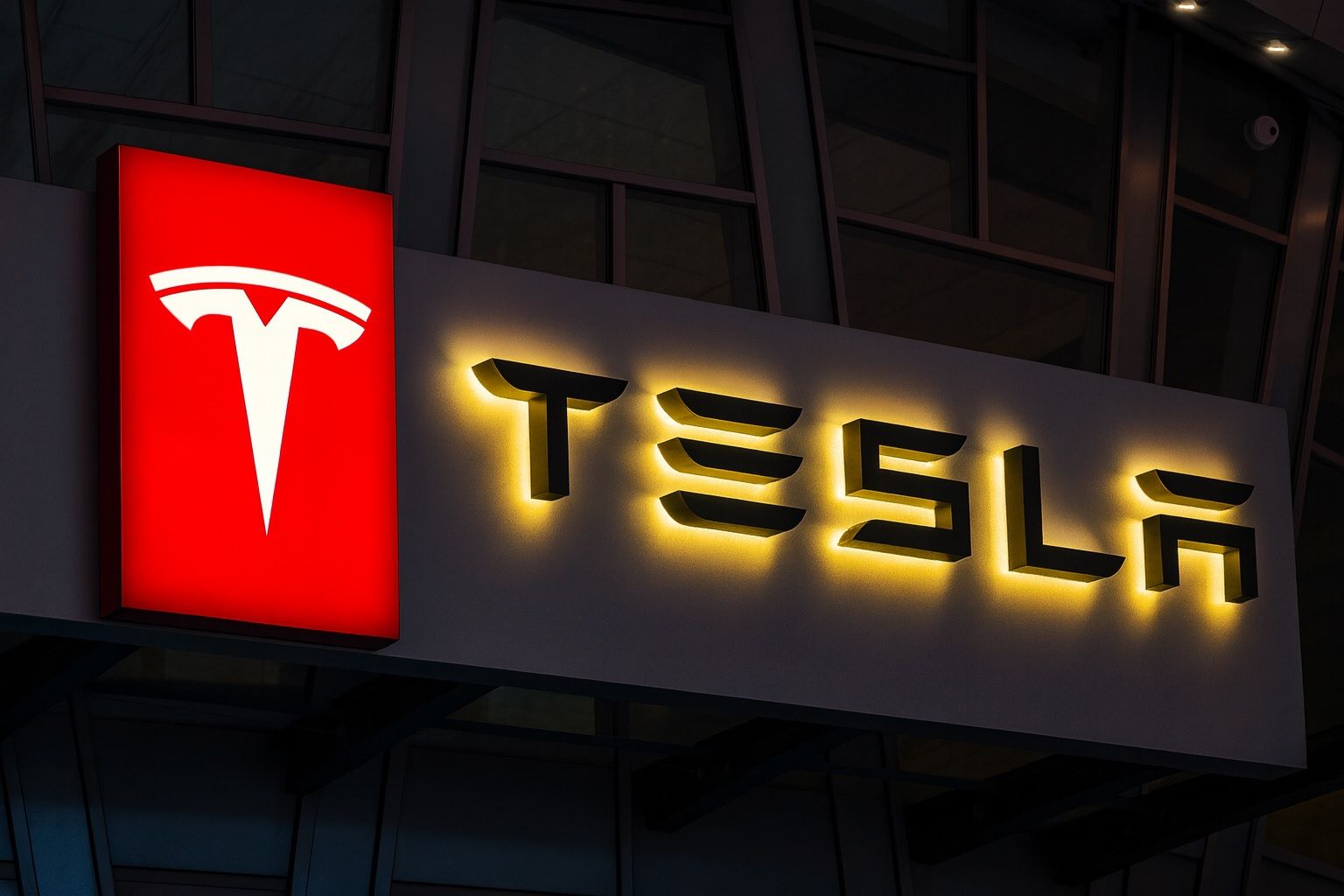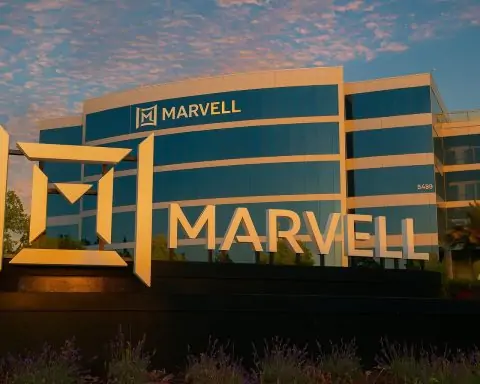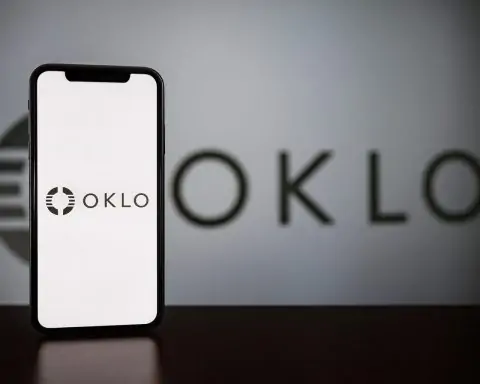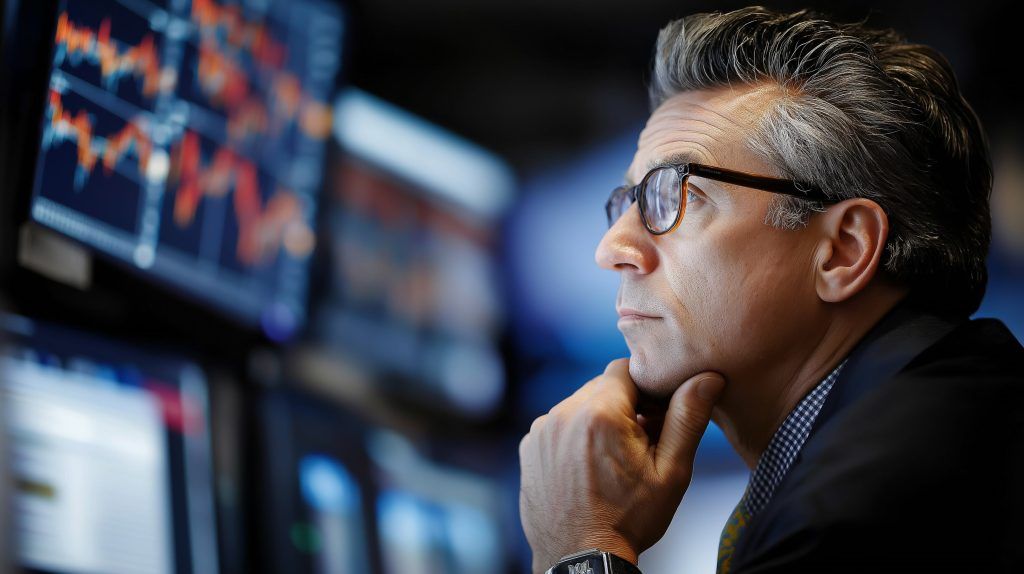As U.S. markets head into the new week, Tesla stock (NASDAQ: TSLA) is sitting near record territory but facing an unusual mix of powerful growth stories and rising regulatory, safety, and geopolitical risks. Here’s a detailed look at what investors should know before the opening bell on Monday, November 17, 2025.
1. Where Tesla Stock Stands Right Now
As of Friday’s close on November 14, 2025, Tesla shares finished at $404.35, with after-hours trading nudging the price slightly higher. [1]
Key snapshot:
- Last close: $404.35
- After-hours (Nov 14): Around $405
- Market cap: Roughly $1.34–$1.35 trillion, putting Tesla among the world’s most valuable companies. [2]
- Valuation: Tesla trades at well over 250x trailing earnings and a rich multiple of forward earnings, far above traditional automakers. [3]
- Trend: The stock is roughly flat year-to-date in 2025, but up more than 60% over the last 12 months, reflecting a huge rally from late 2024 levels. [4]
Analysts tracked by Barron’s now place their average price target around $400 per share, the first time the consensus has ever been that high, even as the stock itself trades only slightly above that level. [5]
That sets the stage for Monday: TSLA is priced for big things, with little room for disappointment.
2. Q3 2025 Earnings: Record Sales, Squeezed Profits
Tesla’s third-quarter 2025 earnings, reported on October 22–23, are still the core backdrop for today’s valuation. [6]
Headlines from Q3:
- Record vehicle deliveries: About 497,099 vehicles, up around 7% year over year, on production of over 447,000 units. [7]
- Revenue: About $28.1 billion, up roughly 12% year over year and ahead of Wall Street estimates near $26.4 billion. [8]
- Profits under pressure:
- GAAP net income around $1.4 billion, down roughly 37% from a year earlier.
- Non‑GAAP/adjusted net income about $1.8 billion, down nearly 30%.
- Earnings per share came in below analyst expectations (about $0.50 vs. ~$0.55 consensus). [9]
- Margins: Operating margin dropped to roughly 5–6%, down from more than 10% a year prior, reflecting higher costs and heavy investment in AI and robotics. [10]
- Energy and storage strength: Tesla deployed about 12.5 GWh of energy storage products, a record quarter, with energy revenue growing by more than 40%. [11]
Several one‑off and structural factors helped revenue but hurt quality of earnings:
- A rush of U.S. buyers pulled into Q3 to capture the expiring $7,500 federal EV tax credit, potentially borrowing demand from Q4. [12]
- Tesla absorbed over $400 million in extra tariff costs, a direct result of escalating trade policies, particularly between the U.S. and China. [13]
- Regulatory (emissions) credits fell sharply—down more than 40%—and are expected to fade further in coming years. [14]
For Monday’s open, this boils down to a simple tension: fundamentals are solid but not spectacular, while the share price still assumes very high growth and profitability down the line.
3. Elon Musk’s $1 Trillion Pay Package — And What It Signals for TSLA
On November 6, 2025, Tesla shareholders approved what is likely the largest CEO pay package in history—a plan that could ultimately award Elon Musk stock worth up to about $1 trillion over the next decade if aggressive performance milestones are met. [15]
Key points for investors:
- The plan reportedly passed with over 75% support, helped by Musk’s roughly 15% personal stake. [16]
- Goals include extremely ambitious targets for:
- Vehicle volumes
- Full Self‑Driving (FSD) subscriptions
- Deployment of humanoid robots (Optimus)
- A large commercial robotaxi fleet
- A staggering cumulative earnings goal (hundreds of billions in profit). [17]
- The board has warned that Musk might leave or reduce his focus on Tesla if the package was rejected, reinforcing the “key‑man” risk baked into the stock. [18]
The market reaction has been mixed:
- In the days around the vote, Tesla shares were volatile; some traders cheered governance “clarity,” while others worried about dilution and the signal that Tesla must hit near‑science‑fiction goals to justify today’s valuation. [19]
Heading into Monday, the pay package cements Tesla’s identity as an AI and robotics moonshot, not just an EV manufacturer—great if Musk executes, dangerous if he stumbles.
4. Regulatory and Safety Overhang: FSD Probes, Door Handles, and Recalls
Regulatory risk is one of the most important things to understand before trading TSLA.
4.1 NHTSA Probe into Full Self‑Driving (FSD)
In October, U.S. regulators opened a high‑profile investigation into roughly 2.9 million Tesla vehicles equipped with Full Self‑Driving (FSD) after dozens of reports that the system violated traffic laws. [20]
The National Highway Traffic Safety Administration (NHTSA) says:
- FSD has allegedly driven through red lights and gone the wrong way during lane changes.
- The agency is reviewing 58 incidents, including 14 crashes and 23 injuries, some involving red‑light violations. [21]
- This probe is in addition to earlier investigations into Tesla’s Autopilot and other advanced features.
If NHTSA concludes FSD poses an “unreasonable risk,” it could demand another software recall or new restrictions—potentially damping the robotaxi narrative that currently underpins a big chunk of Tesla’s valuation.
4.2 Door‑Handle Failures on Model Y
In September, NHTSA also opened a separate investigation into about 174,000 2021 Model Y vehicles after reports that electronic door handles can become inoperative. [22]
- The agency has documented incidents where parents couldn’t reopen the rear doors, sometimes resorting to breaking windows to reach children. [23]
- It’s currently a preliminary evaluation, but it could escalate into a recall.
While these issues may be fixable through hardware or software changes, they reinforce a narrative of quality‑control and safety concerns, which matters as Tesla tries to convince regulators it’s ready for fully driverless service.
4.3 Cybertruck Headlight Recall
Earlier this month, Tesla began recalling over 63,000 Cybertrucks in the U.S. because their front lights are too bright, risking distraction or collisions. [24]
- Covered vehicles span model years 2024–2026, built between November 2023 and October 2025.
- Tesla is pushing a free software update to dim the lights, and regulators say there are no known crashes or injuries tied to the issue. [25]
This comes after a separate March recall covering more than 46,000 Cybertrucks for a trim panel that could detach while driving. [26]
4.4 Powerwall 2 Battery Recall
Beyond vehicles, Tesla is also dealing with a consumer‑product issue:
- On November 13, Tesla recalled about 10,500 Powerwall 2 home battery systems in the U.S. after 22 overheating reports, including five fires that caused minor property damage. [27]
- The U.S. Consumer Product Safety Commission warns that affected units may overheat, smoke, or in rare cases ignite, posing potential fire and burn hazards.
- Tesla has remotely limited charge levels and is planning free replacements for affected customers. [28]
Why it matters for TSLA:
None of these investigations or recalls is individually existential, but together they create headline risk. Any escalation—especially around FSD—could weigh on the stock, particularly given how much value is tied to autonomy and safety perceptions.
5. Robotaxis, Cybercab, and FSD v14: The Growth Dream
Much of Tesla’s current valuation rests on the idea that it will become a robotaxi and AI powerhouse rather than “just” an automaker.
5.1 FSD v14.1.7 Rollout
Tesla has begun rolling out FSD v14.1.7 as part of software update 2025.38:
- The latest build expands FSD v14 to all HW4 vehicles in the U.S. and Canada, including the Cybertruck, after an initial limited rollout. [29]
- The update adds a more detailed 3D visualization of buildings, user‑facing cosmetic features like “Tron Mode,” and behind‑the‑scenes improvements to planning and lane selection. [30]
This rollout helps Tesla defend the idea that FSD is improving quickly—important as regulators scrutinize the system and competitors race to deploy robotaxis with full regulatory approval.
5.2 Cybercab: From Shanghai Debut to 2026 Production
Tesla’s dedicated robotaxi, the Cybercab, is moving from concept toward reality:
- Asia-Pacific debut: Tesla showed the Cybercab at the China International Import Expo in Shanghai (Nov 5–10), its first public appearance in the region, highlighting the company’s autonomous ambitions in the world’s largest EV market. [31]
- Production timeline: At the recent shareholder meeting, Musk said Cybercab production at Gigafactory Texas is slated to begin around April 2026, with a highly automated “unboxed” assembly process aiming for extremely short cycle times. [32]
- Design refinements: Tesla has tweaked Cybercab’s butterfly doors, door edges, and rear profile to improve safety, manufacturability, and aerodynamics, learning lessons from Cybertruck’s sharp corners and European regulatory issues. [33]
5.3 Robotaxi Network Expansion
On recent calls and at the shareholder meeting, Musk has talked about:
- Expanding Tesla’s Model Y–based robotaxi pilot from Austin and the Bay Area into new cities such as Las Vegas, Phoenix, Dallas, Houston, and Miami. [34]
- Ambitions to reach up to 10 U.S. cities by year‑end 2025 with supervised robotaxis. [35]
If Tesla can convince regulators it can operate safely, these deployments help support the “AI and software platform” narrative the market is paying for. But that’s a big “if,” given the FSD investigations outlined above.
6. China, Trade Tensions, and Supply Chain Shifts
China remains both a huge opportunity and a major headache for Tesla.
6.1 Weak China Sales
Recent data show Tesla’s China‑made EV sales fell about 9.9% year over year in October, with production from Shanghai dropping more than 30% from September levels. [36]
Local retail sales in China have also slumped sharply at times:
- One recent month saw only about 26,000 local deliveries, down more than 60% year over year and the lowest level in nearly three years, putting Tesla behind local players like Leapmotor, Xiaomi, XPeng, and Nio. [37]
6.2 Moving Away from China‑Made Parts
According to a Wall Street Journal report summarized by Reuters:
- Tesla is instructing suppliers to phase out China‑made components for vehicles built in the United States, aiming to switch entirely to non‑Chinese parts within the next one to two years. [38]
- The shift is a response to fluctuating U.S.–China tariffs and political pressure, echoing similar moves by General Motors and other automakers. [39]
This strategy may reduce future tariff exposure but could raise costs and complicate production in the near term—another factor investors should consider when thinking about margins.
7. Wall Street Sentiment: Rich Valuation, Divided Opinions
Analyst and institutional views heading into Monday’s open are far from unanimous.
- Average 12‑month analyst target: About $400 per share, essentially in line with the current price. [40]
- Based on consensus estimates, Barron’s calculates that Tesla trades at roughly 180–190x expected 2026 earnings, miles above both legacy automakers and many tech giants. [41]
- YCharts and other data providers show trailing P/E ratios north of 250, with high multiples on free cash flow as well. [42]
Recent behavior by big holders is noteworthy:
- Cathie Wood’s ARK Invest has reportedly been trimming TSLA for multiple days in a row, locking in some gains after the stock’s big run. [43]
- Filings also show some hedge funds and institutional investors cutting positions, even as others increase exposure in AI‑linked names. [44]
Put simply: Wall Street is split. Bulls see a once‑in‑a‑generation AI and robotics platform; bears see a company with slowing core EV growth, rising safety scrutiny, and a valuation that already assumes years of flawless execution.
8. Technical and Market Context Going Into Monday
In the last several sessions, Tesla stock has been on a roller coaster:
- Recent reports highlighted Tesla’s sharpest single‑day drop in months and a three‑day slide approaching 10%, briefly pushing the stock back into negative territory for 2025 year‑to‑date before a modest rebound. [45]
- Broader tech and AI names have also wobbled as investors reassess how much they’re willing to pay for growth amid uncertainties about Federal Reserve rate cuts. [46]
As of Friday’s close, TSLA now trades:
- Somewhat below its recent highs, but
- Still closer to its 52‑week peak than its low, reflecting how strong the multi‑year uptrend has been. [47]
Short‑term traders watching Monday’s open will be paying close attention to:
- Pre‑market volume and price action after a news‑heavy week.
- Any fresh weekend headlines about NHTSA, new recalls, or geopolitical developments that could impact tariffs or demand.
9. Key Questions for Tesla Investors on November 17, 2025
Before the bell rings on Monday, here are the big questions anyone looking at Tesla stock should be asking:
- Can Tesla defend FSD in the face of mounting investigations?
- Additional regulatory action could slow robotaxi plans or require costly software and hardware changes.
- Will margins stabilize, or continue to slide?
- Tariffs, the shift away from China‑made parts, and heavy AI/robotics spend are all weighing on profitability.
- How durable is recent demand, especially in China and the U.S. post‑tax‑credit?
- The October pull‑forward from tax credits and weak China numbers risk a softer Q4.
- Is the valuation sustainable if Tesla grows “only” like a fast automaker instead of a dominant AI platform?
- At multiples many times higher than peers, any wobble in the growth narrative can move the stock quickly.
- Does Musk’s mega‑pay package truly align incentives, or increase governance risk?
- The plan locks in Musk’s control and sets incredible targets; success could justify today’s price, but failure or distraction would be painful.
10. Bottom Line Before Monday’s Open
Tesla enters the week of November 17, 2025 as:
- A $1.3+ trillion company priced for massive future success in robotaxis, AI, energy storage, and humanoid robots. [48]
- A business that just delivered record sales and record energy deployments, but with shrinking margins and falling profit. [49]
- A brand grappling with high‑profile safety probes, recalls, and geopolitical risks, especially around FSD and its China exposure. [50]
For traders and long‑term investors alike, Monday’s open isn’t just about where TSLA prints its first trade—it’s about how comfortable the market is with this trade‑off: incredible upside if the robotaxi/AI story plays out, versus very real execution, safety, and macro risks if it doesn’t.
Disclaimer: This article is for information and journalism purposes only and is not financial advice. Investing in equities, especially volatile names like Tesla, involves risk, including the possible loss of principal. Always do your own research and consider consulting a licensed financial adviser before making investment decisions.
References
1. stockanalysis.com, 2. stockanalysis.com, 3. ycharts.com, 4. stockanalysis.com, 5. www.barrons.com, 6. assets-ir.tesla.com, 7. ir.tesla.com, 8. www.reuters.com, 9. assets-ir.tesla.com, 10. www.ft.com, 11. ir.tesla.com, 12. www.theverge.com, 13. www.ft.com, 14. www.ft.com, 15. www.reuters.com, 16. www.reuters.com, 17. www.theguardian.com, 18. www.reuters.com, 19. www.investopedia.com, 20. www.reuters.com, 21. www.reuters.com, 22. www.reuters.com, 23. www.reuters.com, 24. apnews.com, 25. apnews.com, 26. apnews.com, 27. www.reuters.com, 28. www.cpsc.gov, 29. www.notateslaapp.com, 30. www.notateslaapp.com, 31. www.reuters.com, 32. www.caranddriver.com, 33. www.notateslaapp.com, 34. www.notateslaapp.com, 35. apnews.com, 36. www.reuters.com, 37. www.investors.com, 38. www.reuters.com, 39. www.reuters.com, 40. www.barrons.com, 41. www.barrons.com, 42. ycharts.com, 43. www.investors.com, 44. www.marketscreener.com, 45. www.marketwatch.com, 46. www.investopedia.com, 47. www.marketscreener.com, 48. stockanalysis.com, 49. assets-ir.tesla.com, 50. www.reuters.com







